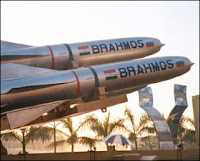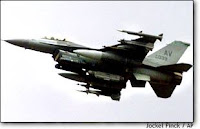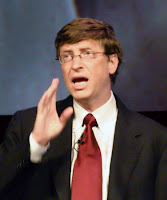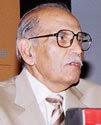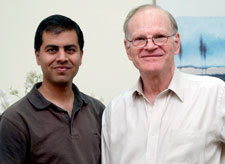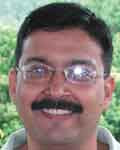Quite recently, CIA declassified a whole set of confidential documents, known as the ‘Family Jewels’. It is certainly not the first time CIA has done that, over the years there have been many such occassions. But this time, there was a lot of hype around it. Being an IT journalist, I was quite curious whether the gents at CIA were keeping a track of the way the humble computer evolved? So, I got cracking and was pleasantly surprised to discover that the agency really kept a close tab on the ‘wonder of computers’.
Not only that, I chanced upon lot of documents that detailed how the Soviets were failing in their IT designs, or how India was emerging as an IT powerhouse and why China would not really succeed in its modernization efforts. The problem was all these documents were scanned as images (at times quite unreadable), so I had to take a printout of quite many that seemed interesting (I have a fat dossier now) and manually type the text in.
It was quite an effort, as I was a wee bit worried, that some journo sitting across the globe at Time, or even BBC, might be working on the same concept. Anyways, after many ‘long nights’ the story was done and was published on CIOL. The story gives an idea of not only what CIA thought about computers , but also how it has evolved over the years. I am quite confident, that it makes quite an interesting read….(http://www.ciol.com/content/2170798471.aspx)
——————————————————————————
CIA on computers, technology and Indian IT
Culled from the declassified documents of CIA, here is a look at how technology and computers were shaping our world over the years. Of course there is lot of Bond, James Bond-like action involved…
Wednesday, July 21, 2007
The left-facing bald eagle perches atop a 16-point compass star. Metaphorically, the star denotes search for intelligence and information outside the dominion of the US Additionally, the compass star rests upon a shield, symbolic of defense and fortification. The emblem or the seal of Central Intelligence Agency (CIA), the premier surveillance and security agency of the US government, more or less says it all.
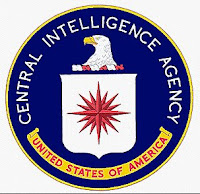 Shrouded in a cloak of secrecy, CIA carries covert work across different continents and countries. Not many know, what all the agency exactly does and there is little that the agency doesn’t, according to the few that happen to know and have spoken out. Established just after the Second World War, in 1947, CIA’s mandate is to obtain and analyze information about foreign governments, corporations, and persons. The agency or the company, as it is often referred to as, is also mandated to effect propaganda and handle public relations for the US administration. And finally, it is also, consigliere and caporegime of the reigning US President; ever ready to do his bidding.
Shrouded in a cloak of secrecy, CIA carries covert work across different continents and countries. Not many know, what all the agency exactly does and there is little that the agency doesn’t, according to the few that happen to know and have spoken out. Established just after the Second World War, in 1947, CIA’s mandate is to obtain and analyze information about foreign governments, corporations, and persons. The agency or the company, as it is often referred to as, is also mandated to effect propaganda and handle public relations for the US administration. And finally, it is also, consigliere and caporegime of the reigning US President; ever ready to do his bidding.
Over the years, there have been many accusations and charges against the CIA, ranging from recruitment of Nazi scientists and SS officers to hiding information about UFOs; experiments on unwitting American citizens to concerted efforts to assassinate Cuban President Fidel Castro. There have also been allegations that the Agency had alliances with opium lords in Burma, Thailand and Laos; an assassination program in Vietnam; complicity in the toppling of Salvador Allende in Chile; recruiting and training Economic hit men, the arming of opium traffickers and religious fanatics in Afghanistan including a certain Osama bin Laden; the training of murderous police in Guatemala and El Salvador; and involvement in drugs-and-arms shuttles between Latin America and the US, the list just keeps going on.
But then, most of these is just speculation, and there is little proof of them. Unless and until the agency itself admits it, albeit obliquely. Over the past few years, the Agency, has been declassifying records under the Freedom of Information Act. These declassified records range from elaborate reports to short summaries on a range of issues, right from Cold War to Desert Storm. All these documents can be accessed from CIA’s website (http://www.foia.cia.gov/), using simple search functionality. There were quite a few documents, dubbed as the ‘Family Jewels’, were declassified recently.
Now, it is a well known fact that the agency has also been has been an avid technology user, it was even supposed to own quite a few U2 planes and reconnaissance satellites. Its obsession with technology is two-fold: one for its own use and second what other nations might be using to get an edge over the US Right from the onset, the agency has been making confidential reports and assessing technology. The big push for the same came in fifties with the launch of Sputnik satellite by comrade Stalin in the erstwhile USSR.
So, how could the agency miss the irrepressible computer, the miracle machine that was also evolving more or less around the same time? It certainly did not, on searching the term ‘computer’ on CIA’s website, one gets around 517 declassified documents, from the oldest on German textile industry using computers as a tool published in August 1945 to the latest on WMD search in Iraq dating from September, 2004.
Studying the documents is like taking a trip down the history, a proverbial time machine. One gets to know what really people thought about the wonder of the machine, what were the possibilities according to the people way back then and how things have changed.
A competent ‘mechanical slave’
In 1960, Joseph Becker authored a paper on “The Computer – Capabilities, Prospects and Implications”. The report talks about how “intelligence negotiates for the services of an obtrusive, demanding, but enormously competent mechanical slave.” That’s how the computer has been defined, a competent mechanical slave. First up, Becker distinguishes between two types of computers, one is the analog and the other is digital. The analog, he tells us, is more or less a mechanical device that “gives measurements of a continuum, notably time, direction, distance, or velocity, processes them mathematically as desired and displays the results in some measurable form.” A speedometer is an example of an analog computer.
A digital computer is like an abacus, he states. Digital computers deal with discrete numbers. “Numbers may be used to represent the layers of the alphabet or verbal symbols, the digital computer is the machine that has the major promise for handling the verbal data if intelligence,” he states. 
The paper gives an instance of an digital computer, “Electronic computers like Remington Rand’s UNIVAC or IBM’s 700 series process numbers at speeds measured in millionths of a second, have an immense storage space or “memory” function precisely and accurately, and can process letters of the alphabet when these are numerically coded, treating them internally as if they were numbers,” states Becker as if he was wonder-stuck. In fact, it is this wonder that really strikes you. Don’t we get impressed when we see a humanoid like Aibo doing things, imagine what people must have thought way back then.
Becker talks about how there is a notion that “digital computers are endowed with near-human or even super-human qualities”. And discusses how a seasoned computer operator will argue that on occasion the machine has a ‘personality of its own’ and “his emotional involvement with the machine is such that research being done in man-machine relationships to arrive ay the right mix of human factors for happy and efficient work with a machine as colleague or subordinate.” It seems that the computer back then had a sort of halo to them. But he states emphatically, that the computer do not “think” but are driven through pre-determined set of operations.
In the future, Becker states, these computers would be extensively used in civilian and military work due to their high-reliability and faster processing. He lists out the different component of the EDP system as: input equipment, the computer, storage area, control mechanism and finally output devices. Becker also talks about a ‘recent innovation’ i.e., automatic programming. He talks about IBM’s Fortran language that makes a programmer’s job quite easier, as it contains only “38 statements”.
Becker also talks about how hardware technology continues to forge ahead, with the use of ‘cryogenic techniques and micro-miniaturization of circuitry’. “In the days to come very complex circuitry can thus be built into a cube of stacked wafers the size of a lump of sugar,” he says.
Yet, Becker’s prediction about the future of the digital computer is real attraction. “Looking ahead, designers foresee the day when refrigerated computers the size of portable TV set will operate on wall socket power. It is symptomatic that one of the serious design problems facing the computer engineers is that of minimizing the length of connecting wires, which becomes more and more critical as components get smaller and signal speeds approach the speed of light,” he states.
Looking back, one can say that he was not much off the mark, quite soon, the use of transistors curtailed the need of connecting wires and then of course there were the ICs. In the report, Becker further details the application of the computer and hints at how CIA could benefit immensely from computerization, namely through having a central digitized repository of documents. He also talks about the use of computers for automated translation of documents in foreign languages and to study photos in a better way. He also gives a sort of warning, “if we profit from the experience of industry during the past few years we should be prepared for some radical changes in the organizational structure as a result of the introduction of machines.” It could be that he was talking of labor substitution. All-in-all, the paper is quite detailed in its examination of the mechanized phenomenon, and he sure was not much of the mark.
The clandestine and conniving Soviets
One thing is for sure, after the Sputnik debacle. The CIA kept a hawk eye on all going on behind the iron curtain. Through out the years, there have been numerous reports and assessments on how well or how bad the Soviets were faring. Sometime, they would be quite premonitory in nature, talking about how USSR was rapidly deploying technology and specifically computers to good use. But more often then not, they debunked the Soviet efforts, it must have been quite a relief to the supreme commander at the White House.

One such report from 1977, titled “Soviet RYAD Computers: A Program in Trouble,” talks about how the Soviets were unable to succeed in creating clones of the IBM 360 series. “The USSR continues to experience serious delays in the development production, installation and effective use of its RYAD computers, which form the cutting edge of the Kremlin’s modernization program,” the author states. The reason according to the report was fairly simple, Soviet computers had been designed mainly for scientific applications and had insufficient internal memories.
In the report there is mention of how the Soviets had tired to clandestinely copying from the IBM 360 series. And also they were funding different hardware initiatives across Eastern European, namely in Bulgaria, Poland, East Germany, and others. Even then they were failing, quite miserably so as to say.
That was from the hardware point-of-view, another report goes on to state, how USSR was also trying to source Western software and computer applications that could be replicated at Moscow and other places. And just like the case in hardware, they were failing miserably in software as well. “The leadership of the Soviet software R&D community recognizes — as revealed in open-source literature – that the USSR’s software industry is technically backward. The Soviets know that, if this problem is not corrected, Western countries will be to extend their domination of advanced information-processing technologies for decades to come,” the author mentions.
Theorizing on possible reasons the author states that the lack of success with hardware might be the reason for the software industry. “The USSR is struggling with limited success to acquire and put into use the computer hardware that would be vital to a modern software industry,” it states. According to the report, to overcome this limitation, the Soviets were trying to source software from Western nations clandestinely. They were trying their hands at data sources codes, simulation software, algorithms for application development, utilities programs, etc. Later on, in another paper, there is a big hint that India might have a role to play in the technology transfer to the communist state.
India; an ally or a threat?
Americans were loath to the idea of the Russians (rather the Soviets) playing around with their machines or software. Under no circumstances did the US government want the Soviets to get hold of IBM machines or software of any kind. Thus for them, every State that had affable relationship with the Soviets was a threat. And India happened to be one such State. 
In June 1985, there was a report published under the title, “India: A Growing Role in Technology Transfer.” Even after declassifying it, the agency has censored close to 70 per cent of the report (there is still a lot they don’t want the Indians to know). In the report, the author not only talks about the danger of India passing out the bits, bytes and ICs to the Soviets, but also in a small way captures the change that was taking place at that time.
There is a lot of talk of how prime minister Rajiv Gandhi was technolizing India and introducing a slew of reforms to that end. “Gandhi has introduced sweeping economic reforms that promise to encourage imports of sophisticated western technology and boost India’s ability to manufacture its own high-tech products. As a result, India will offer an increasingly attractive target for Soviet science and technology collectors in the years ahead,” the report warns.
It also talks about how after decades of slow and uneven growth, India had developed sizeable heavy industrial sector and an impressive economic infrastructure, and was poised for an unprecedented expansion into high-tech areas such as electronics and computers.
“We believe the scope for such growth is vast – India boasts a brand range of scientific activity and a large reservoir of highly educated and technically-trained manpower,” the author states. Adding that, “Gandhi is eager to make Indian high tech goods competitive in world markets, and the development of computer software exports is receiving particular emphasis.”
The alarm bells were ringing due to the close Indo-Soviet relationship. But there was an interesting observation as well, that even the Soviets might not like India to be more techno-savvy.“For the Soviets, India’s growing interest in expanded ties with the West and its quest for advanced technology present both a challenge and an opportunity,” the author mentions.
It seems that the American government had shared its concern with the Indian counterparts, as there is a mention about Indian security practices as well. “Indian officials believe their security procedures are adequate to deny the Soviets access to Western technology with the government, the military and public sector enterprises.
Six years after the report was published, USSR ceased to exist and the Indian economy was liberalized. Thus one could safely assume that the American fears might not have materialized or whether they actually did.
The coming of the Internet
The CIA was also tracking with interest the evolution of the Internet. The main concern of the agency was quite obvious: the Soviets could use it to steal information. A report “Soviet and East European Computer Networking: Prospects for Global Connectivity” published in 1990 list outs those concerns. The main concern for the agency was triggered by the entry in April 1990 of the USSR, Bulgaria, Czechoslovakia, Hungary, and Poland into the European Academic and Research Network (EARN). “The entry is likely to have a profound effect on scientific communities throughout the Soviet Union and Eastern Europe. The Soviet Akademset network, for example will become considerably more value if it provides a reliable bridge to vast foreign networks,” the author states.

There is also the story about the genesis of the Internet and talks about the “primary networks in the West”, and it sure is quite informative in a brief manner. “The best example of a government-subsidized research network is the Internet, which grew out of the US ARPANET project. Starting in the late 1960s, computers at the US Government, military, and commercial organizations conducting government-sponsored research were interconnected to permit the transfer of research data and maximize the utility of computers at various sites of the network. ARPANET spawned similar network, such as the US National Science Foundation-sponsored NSFNET to provide remote access to its supercomputer centers, and these networks themselves interconnected (inter-networked) – the result was termed the Internet. The Internet carries only unclassified information, and it now extends to many foreign countries,” the author states.
In the same report, there is an interesting story about what could be the first “primed” hacking attempt. Dubbed as the ‘Hanover Hacker’, the report details the Soviet attempts to hack US systems to gain information. The interesting thing was that they employed the help of programmers in West Germany (which was then an ally of the US) for the act.
“We have already learned about one Soviet effort to carry out illicit technology transfer via the Western research networks, the case of the ‘Hanover Hacker’. According to press reports, West Germans, acting at the direction of a Soviet handlers, engaged in a form of espionage over the Internet, Breaking into user accounts on computers in the United States and Western Europe by exploiting poor network security – including easily guessed or default passwords – the Germans stole proprietary or otherwise sensitive data. Although none of the data was classified, some of it could be considered ‘technical data’ that might have been restricted from export to the USSR by COCOM,” the author states.
But he seems to be quite baffled by the Soviet attempt. “According to the information provided to the press, the Soviets paid a considerable amount of money for the information and stolen passwords they received, The sum of the damage caused by the hackers – even bearing in mind the possible effects of the transfer of technology – does not seem to be substantial enough to warrant the expenditure. The operation’s exposure, however, could be considered a fluke (the hacking was not detected by any intelligence or police agency in any of the affected countries – it was discovered and pursued by a US academic researcher) and the Soviets may have anticipated far more productive future collection from the use of stolen passwords,” he states.
Beyond that, there is not much on the Internet, maybe there is oodles of reports that are waiting to be declassified.
Unmade in China
It was not only the Soviets that the Americans were worried about, they were also keeping an eye on the fledgling dragon, so as to say. China was also looked upon with distrust and was not thought to be capable of succeeding in its modernization efforts.

A report was published in 1986, titled, “China: Science and Technology Modernization.” The evaluation is quite pithy, that China though aspiring to be a big technology powerhouse could not really become one. “China has had little success in civilian applications of high-priority, advanced-technology sectors such as semiconductors, computers, and telecommunications. This failure will in our view hold back advancement in other high-priority areas, such as the development of automated production capabilities and communications networks for business and governments,” says the author.
Even then, the authors do note that energy and focus of the Chinese authorities in its modernization efforts. There is often the talk of how the senior government officials were quite serious about the S&T modernization and had set stiff goals that had to be achieved.
The goals were to commercialize technology, increase acquisition of foreign S&T, and finally breaking down of the barriers between civilian and military research and production.
But it was a tough task, according to the authors, as work conditions tend to be poor and key skills – such as computer specialists – were still in short supply. The big plus for the modernization efforts were the hundreds of Chinese students that were returning after being educated in Western universities. They were exposed to Western technology and could be a great help in the change.
Yet there was some amount of wariness. “China’s S&T modernization program creates both opportunities and problems for the United States,” The good thing was that there were already signs of a much more “open China.” But a powerful China could also be quite assertive. “China’s growing S&T capabilities and accompanying improvements will increase Beijing’s ability to project power against the nations on its periphery,” the author states.
There is the talk of how China may be able to narrow somewhat the gap in selected industrial technologies with the industrialized world over the next decade. “The degrees of narrowing is uncertain, but catching up fully with the West in any of these areas is very unlikely.” The general outlook for progress in high-priority areas was summarized as below:
Microelectronics: Gap will widen
Computers: Gap will widen
Telecommunications: Gap will remain or widen
Automated manufacturing: Gap likely to persist
Transportation: Gap will remain fairly uniform
Energy: Gap will narrow
Special structural materials: Gap will narrow
Biotechnology: Gap will narrow
“Of course, China will try and avoid becoming overly dependent for technological assistance on the United States or any other country,” the author adds.
In retrospect, one can safely say that the author (or authors) could not have been more off the mark. The transformation at China did go out pretty well, so much so that foreign firms are shifting almost all their manufacturing capabilities to China. The country no longer is dependent on technological assistance but is a global powerhouse of the same.
The world in 2015
Among the many reports, there is one that is quite interesting, titled “Global Trends 2015: A Dialogue About the Future with Non-government Experts.” The report was published in December 2000 and does crystal ball gazing into the future. It is quite an entertaining and speculative view of the future. As we are currently, somewhere in between (in terms of time), it still makes for an interesting read.
“The integration of information technology, biotechnology, materials sciences, and nanotechnoloyg will generate a dramatic increase in innovation. The effects will be profound on business and commerce, public health, and safety,” the report notes.
It also states that in the following years, the time between the discovery and the application of scientific advances will continue to shorten. 
There are many observations on the political and security trends, economic dynamism, regional interaction, regional trends. But lets talk specifically about the IT front. “Local-to-global Internet access holds the prospect of universal wireless connectivity via hand-held devices and large numbers of low-cost, low-altitude satellites. Satellites systems and services will develop in ways that increase performance and reduce costs,” the author states.
The report goes on to list the countries that will play an important role in the IT revolution. “Among the developing countries, India will remain in the forefront in developing information technology, led by the growing class of high-tech workers and entrepreneurs. China will lead the developing world in utilizing information technology, with urban areas leading the countryside. Beijing’s capacity to control or shape the content of information, however, is likely to be sharply reduced,” it says.
“Discoveries in nanotechnology will lead to unprecedented understanding and control over the fundamental blocks of all physical things. Developments in this emerging field are likely to change the way almost everything is designed and made. Self-assembled nanomaterials, such as semiconductor ‘quantum dots,’ could by 2015 revolutionize chemical labeling and enable rapid processing for drug discovery, blood content analysis, genetic analysis, and other biological applications,” the author adds. There is also the mention of how by 2015, information technology will make major inroads in rural as well as urban areas around the globe.
But there is also a rider. “The rising tide of the global economy will create many economic winners, but it will not lift all boats. The information revolution will the persistence of poverty more visible, and regional differences will remain large.”
There is quite some thought that is given to Indian IT. Obviously, it must have been the success of the Y2K that must have woken up the Agency to the potential of Indian IT.
“India’s economy, long repressed by the heavy-hand of regulation, is likely to achieve sustained growth to the degree reforms are implemented. High-technology companies will be the most dynamic agents and will lead the thriving service sector in four key urban centers- Mumbai, New Delhi, Bangalore, and Chennai. Computer software services and customized applications will continue to expand as India strengthens economic ties to key international markets,” the author adds.
On China, the author is unwilling to bet, saying that, “estimates of China beyond five years is fraught with unknowables.” But he is emphatic on Russia’s decline. “By 2015, Russia will be challenged even more than today to adjust to the expectation for world leadership to the dramatically reduced resources it will have to play that role,” he states.
So this is how the world seems in 2015, India continues to go stronger thanks to IT, so does China, but not Russia. We are half way through; it remains to be seen whether in the next few years the authors would be proven right or wrong (they seem to have miscalculated Russian resilience, Vladimir Putin seems to be doing quite well for himself and his nation, as of now).
Computers @ CIA
After talking about computers across the globe, once chances upon a rare report that gives an idea of how the computers at CIA had evolved. In a report, “30 and Thriving” published in 1991, there is the talk about technology changes at the agency. At the onset, there were the AIWAC, which was a total-batch-processing system used for U2 measurements and worked on paper tape. It was the agency’s first digital computer. Next came IBM 407 and 1401, they generated “blip sheets” — massive paper printouts with up to seven carbon copies of historical data and blank data-entry forms. The 1401 were an improvement as they had four magnetic tape drives, and “8,000 bytes of memory”!
In 1962, came the Univac 490 systems, with 32,000 words of memory and were used for measurement and information procession. Further advancement came with the Univac 494 that brought the wonders of remote-batch processing. The agency went in for the Univac 1100s series in 1975 and in 1986, they were complemented with Sun terminals, it was then that the “light pens were replaced by the mouse.”
As of 1991, the year the report was published, the agency had two Uniysys 1100/93s’ and one Unisys 1100/91. “Together,” the author says proudly, “these systems offers 160 million bytes of memory (approximately 152 MB) and 146 billion bytes (approximately 135 GB) of storage and process 48,000 transactions a day.”
Another document honors Albert D “Bud” Wheelon, responsible for the creation of the Directorate of Science & Technology at CIA. Wheelon was mandated to create the department in a jiffy, post the Cuban missile crisis in 1962. In the report there is a quote by a person who eulogizes Wheelon and talks of how the research at CIA and other agencies have helped the progress of science.
“S&T research contributing to the processing and analysis of vast amounts of information which the agency collects daily. Research in improved data extraction, automatic database generation, machine translation and information retrieval – in multiple languages – have been major efforts supported by interagency groups, often led by S&T officers, and in several cases have led to commercial products. How else will the analyst or policymaker get the right amount of information in the form he wants on his desk when he needs it?” he says.
“The forerunner of the Pentium chip came into being because of some visionary officers in the S&T who believed in a radical concept – the RISC processor – worked with industry in the early 1980s to see that it got a fair chance – now look where we are,” he adds while giving other examples like tools for urban planners, 3D software, and facial recognition tools, etc. that have come from the agency stables.
So this is how the world of technology has evolved over the last years. Surely there are hundreds of thousands of documents and reports that have yet to see the light of the day. At least we can be sure of one thing after reading all these “Family Jewels.” There is so much more that we really don’t know. But we do know that the bald eagle is keeping an eye on all of us, making discrete notes.











